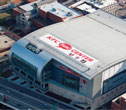Specific building code requirements apply to roof system re-cover and replacement projects. But because a large number of reroofing and re-cover projects are undertaken without a licensed design professional's involvement, it is important you know building code requirements that apply to such projects.
Code requirements
In the International Building Code, 2012 Edition (IBC 2012) and its previous editions, roof systems are addressed in Chapter 15—Roof Assemblies and Rooftop Structures. Requirements for reroofing specifically are addressed in Section 1510—Reroofing.
IBC 2012's Section 1510.1—General indicates materials and application methods used for re-covering or replacing existing roof systems must comply with the same requirements as new roof systems except reroofing projects need not comply with the code's minimum 1/4:12 slope requirement for roofs that provide positive drainage. The code defines positive drainage as a condition in which consideration has been made for all loading deflections of a roof deck and additional slope has been provided to ensure roof drainage within 48 hours of precipitation.
Section 1510.2—Structural and Construction Loads indicates a building's roof structure needs to be capable of supporting the roof system plus equipment loads and the weight of stored material on the rooftop during roofing operations.
Section 1510.3—Recovering Versus Replacement explains the specific requirements where roof system re-covering is not appropriate and removal and replacement are required. The code requires removal of an existing roof system if it is over wood shake, slate or clay, cement or asbestos-cement tile roof systems; two or more layers of any existing roof coverings; and when the existing roof system is wet or deteriorated to the point it will not be a suitable substrate. When roof system removal is required, the code stipulates all layers of existing roof systems need to be removed down to the deck.
The code includes several specific exceptions to its roof system removal and replacement requirements. Complete and separate roof systems, such as a standing-seam metal panel roof system installed in a low- to steep-slope roof system conversion, are permitted to be installed without removing the existing roof system(s) provided the new roof system transmits roof loads directly to the building's structure and does not rely on the existing roof system(s) for support.
Also, the application of a new roof coating over an existing spray polyurethane foam (SPF) roof system is permitted without removal of the existing SPF roof system and any underlying roof system.
For existing steep-slope roof systems using ice-dam protection membranes, another exception allows an existing ice-dam protection membrane to be re-covered with a new ice-dam protection membrane as part of a new steep-slope roof system installation. This exception is new in IBC 2012 and eliminates the need to remove ice-dam protection membranes, which typically results in damaged roof sheathing.
Section 1510.5—Reinstallation of Materials dictates which roofing materials can be reused in reroofing situations. Existing slate and clay and concrete tile can be reused except when damaged, cracked or broken. Existing vent flashings, metal edge flashings, drain outlets, collars and metal counterflashings can be reused when they are not rusted, damaged or otherwise deteriorated. Aggregate-surfacing materials are not permitted to be reused.
Section 1510.6—Flashings requires flashing details be reconstructed in reroofing situations according to manufacturer's installation instructions. Also, any metal flashings to which bituminous materials are adhered are required to be primed before installation.
Alternative methods
IBC 2012's Section 104.11—Alternative Materials, Design and Means of Construction and Equipment gives code officials the authority to approve alternative designs, materials or methods of construction not specifically provided for or permitted by the code as long as they meet the code's intent. Such an approval typically is granted on a case-by-case basis after a building code official receives a specific request documenting the circumstances of the alternative request. A code official may require additional substantiating information.
Examples of reroofing situations where the code's alternative procedures may be useful include when flashing heights are not as high as is typically required, when reuse of dry existing roof insulation is desired and when reuse of existing aggregate ballast is desired.
Additional considerations for reroofing are provided in the Reroofing section of The NRCA Roofing Manual: Architectural Metal Flashing, Condensation Control and Reroofing—2010.
Mark S. Graham is NRCA's associate executive director of technical services.



